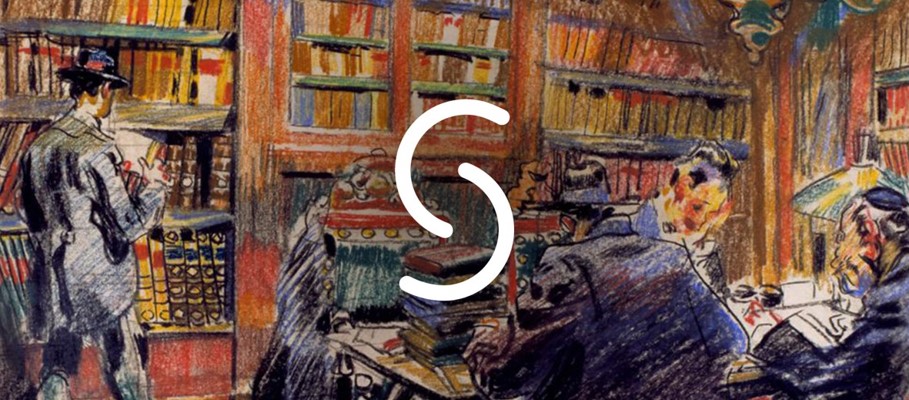Tribunal de la Inquisición de Toledo
Item
-
Country
-
ES
-
Name of institution (English)
-
National Historical Archive
-
Language of name of institution
-
spa
-
Contact information: postal address
-
Serrano, 115 28006 Madrid
-
Contact information: phone number
-
0034 917688500
-
Contact information: email
-
ahn@cultura.gob.es
-
Reference number
-
INQUISICIÓN
-
Type of reference number
-
Archival reference number
-
Title (English)
-
Inquisition Tribunal of Toledo
-
Title (official language of the state)
-
Tribunal de la Inquisición de Toledo
-
Language of title
-
spa
-
Creator / accumulator
-
Tribunal de la Inquisición de Toledo
-
Date note
-
1482/19th century
-
Language(s)
-
lat
-
spa
-
Extent
-
500 boxes, 7 books, and 2 files
-
Type of material
-
Textual Material
-
Scope and content
-
The Tribunal de la Inquisición de Toledo fonds comprises documentation produced by the Inquisition of Toledo.
The fonds is divided into five main groups, each reflecting different types of cases or disputes: 1) Pleitos civiles (Civil proceedings) (1537-1802), 2) Pleitos de competencia (Jurisdiction proceedings) (1537-1783), 3) Pleitos fiscales (Tax proceedings) (1491-1776), 4) Procesos criminales (Criminal proceedings) (1505-1817), and 5) Procesos de fe (Religious proceedings) (1483-1819). This last group includes the largest number of trials against Conversos accused of Judaism. Throughout these processes, there is also information regarding Western Sephardic communities with whose members some defendants kept contact or even where they had been in the past. For instance, Yosef Kaplan (1987) and David Graizbord (2004) identified some cases of defendants of the Inquisition of Toledo who had lived as public Jews in Sephardic communities abroad. They later returned to Spain and presented themselves before the Inquisition, looking for remission for their "infractions".
PARES, the system of the Spanish Archives, provides researchers with extensive documentation that has already been digitised and made available online.
In most cases, consultation of inquisitorial documents should be complemented with research on other district courts and the Consejo de Inquisicion (Inquisition Council) fonds, which contains documentation produced by the Suprema. This institution had jurisdiction over all inquisitorial courts in Spanish territories.
-
Archival history
-
After the extinction of the Inquisition in Spain, most documents were sent to the Archivo General de Simancas. From 1896, the inquisitorial fonds held in Simancas and Alcalá were sent to the Archivo Historico Nacional, where the Inquisición section was created. This section has been completed with the incorporation of other series of inquisitorial documents that had been stored in the Biblioteca Nacional de España (National Library of Spain) in 1914.
The archives of the Court of Toledo are among the best preserved and the most easily accessible of those deposited in the National Archive.
-
(sources: PARES: Portal de Archivos Españoles)
-
Administrative / Biographical history
-
The Inquisition Court in Toledo was established in Ciudad Real in September 1483. From May 1485, it was moved to Toledo, remaining there until its extinction in 1820.
Until 1522, its area of jurisdiction often changed. From then on, the Inquisition of Toledo became stable, being the second largest court of Spain, with 48,000 km² of jurisdiction, second only to Valladolid. It included Alcalá de Henares and Toledo, the seat of the largest and one of the most influential primatial archbishopric of the Iberian Peninsula, Madrid, which became the political capital of the monarchy in 1562.
As was the case of the Iberian Inquisitions, the initial primary targets of the Court of Toledo were conversos of Jewish origin. The proportion of defendants accused of Jewish practices ("practicas judaizantes") exceeded 90% at the time (275 cases a year, around 8,000 reconciliations between 1482 and 1490). From the early 16th century, the court's activity declined. However, it gained a new vigour by the middle of the century, following the changes in Christianity after the Protestant Reformation. By then, a new campaign of persecution began against practices and behaviours considered to be related to "Lutheranism", which included those who were critical of religious and moral standards. At the time, the "moriscos" deported from Granada were also among the most persecuted, as reflected in the court's activity between 1570 and 1611. After this period, a new decline began. Only trials related to magical and superstitious offences increased, especially in Madrid. However, in specific periods, such as in 1647, the persecution against Jewish descendants rose. Later, a new wave of imprisonments against conversos occurred in the early 1720s. By then, the most relevant inquisitorial activity was concentrated in Madrid, which no longer depended on Toledo.
The French authorities, who occupied Toledo from 1808 to 1813, declared the abolishment of the city's Inquisition. In 1814, King Fernando VII of Spain reconstituted the court. However, it was ultimately abolished in 1820.
-
Sources:
-
Dedieu, Jean-Pierre. 2010. “Toledo.” In Dizionario storico dell’Inquisizione, Adriano Prosperi, 3:1577–78. Pisa: Edizioni della Normale.
-
PARES: Portal de Archivos Españoles
-
System of arrangement
-
The fonds is divided by types of documents. Series are organised chronologically.
-
Author of the description
-
Kevin Soares, 2023
-
Bibliography
-
Dedieu, Jean-Pierre. 2010. “Toledo.” In Dizionario storico dell’Inquisizione, Adriano Prosperi, 3:1577–78. Pisa: Edizioni della Normale.
-
Graizbord, David L. 2004. Souls in Dispute: Converso Identities in Iberia and the Jewish Diaspora, 1580-1700. Jewish Culture and Contexts. Philadelphia: University of Pennsylvania Press.
-
Graizbord, David. 2019. “A Crisis of Judeoconverso Identity and Its Echoes, 1391 to the Present.” In Religious Changes and Cultural Transformations in the Early Modern Western Sephardic Communities, Yosef Kaplan, 3–21. Leiden; Boston: Brill.
-
Kaplan, Yosef. 1987. “The Travels of Portuguese Jews from Amsterdam to the ‘Lands of Idolatry’ (1644-1724).” In Jews and Conversos: Studies in Society and the Inquisition, 197–224. Jerusalem: Magnes Press.
